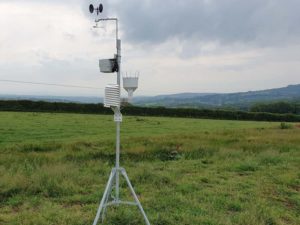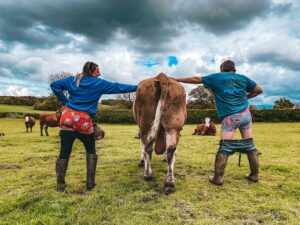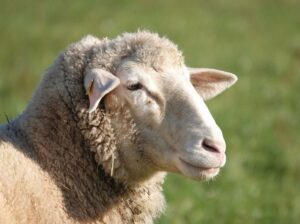 Farmers should consider adding Westerwolds to their grass leys this spring to prevent forage shortages later in 2018, and to help set them up for a better season next year.
Farmers should consider adding Westerwolds to their grass leys this spring to prevent forage shortages later in 2018, and to help set them up for a better season next year.
After last year’s wet autumn, farmers were unable to reseed leys, and many acres of grassland have been badly damaged by poaching and the poor weather since, explains David Rhodes, technical manager at DLF. “This could create a serious shortage of forage acres during 2018.”
With the continued wet spring, many farmers are now using more of their forage stocks or buying in extra fodder to make up the shortfall. And turnout is likely to be particularly late, he adds. “According to AHDB’s weekly update, grass was growing at an average rate of 13.9kg dry matter per hectare/day at the end of March – that compares to 41.2kg at the same time last year.”
The weather damaged leys will not provide the yield or quantity of silage needed in the coming season, warns John Harris, south west adviser at Oliver Seeds. “The prolonged winter housing period coupled with the late spring – and the resulting lower yield potential from late sown spring crops – will put pressure on this year’s ability to fill the clamp. In addition, extra nitrogen won’t help these damaged swards yield.”
Several strategies can be employed to ensure both successful establishment and production in the year of sowing and help farmers get back to good productive swards.
Under-sowing a whole-crop cereal or arable silage with grass is one choice, which provides a potentially high yield of protein and starch in as little as 14 weeks with the established grass to use thereafter, says Mr Rhodes. However, it does usually involve two passes with the drill.
For those who prefer to stick with grass, Westerwolds ryegrass is a straightforward and highly effective way of producing bulk in the year of sowing. “It’s also the only grass to form a stem in year one; all other species remain leafy in their maiden season, so that may help those making hay or haylage.”
Another option is to carry out a full reseed in the spring using a standard grass mixture with up to 7.5kg/ha (3kg/ac) of Westerwolds ryegrass added, and increasing the sowing rate to 42–45kg/ha (17-18kg/ac). This would be ready for grazing within eight weeks and cutting within 10 to 12 weeks, he explains.
“This will also allow for rapid regrowth for grazing or subsequent cuts, with production of up to 10t/ha of dry matter in the year of sowing. The Westerwolds then becomes a nurse crop for establishing the standard mixture, ready for the following year. It’s a simple, low-cost solution to overcome production shortfalls but leaves you with the ley you need going forwards.”
However, as Westerwolds is an aggressive, fast growing species, it’s essential that it is encouraged to die out in the year of sowing, says Mr Rhodes. “Consequently, mixtures containing Westerwolds should always be sown before the end of June and their autumn management should include hard grazing to ensure this component is minimised for the following year.”
A third option is to sow Westerwolds ryegrass as a pure stand for multiple cut silage over the summer before a full re-seed in the autumn, he adds. “Sowing at 37kg/ha (17-18kg/ac), this can produce up to 15t DM/ha and is very responsive to high fertiliser input. Beware though, if it is used in an arable rotation it is important to cut the crop before it becomes over-mature, to prevent it from shedding viable seeds that could cause problems in subsequent crops.”
Over seeding existing leys could also be another alternative, says Mr Harris. “Whatever you decide, take the time to assess your fields and make sure the grass mixture is right for the site, purpose and stock. Discuss your requirements with a seed specialist who will help you make the right decision.”





